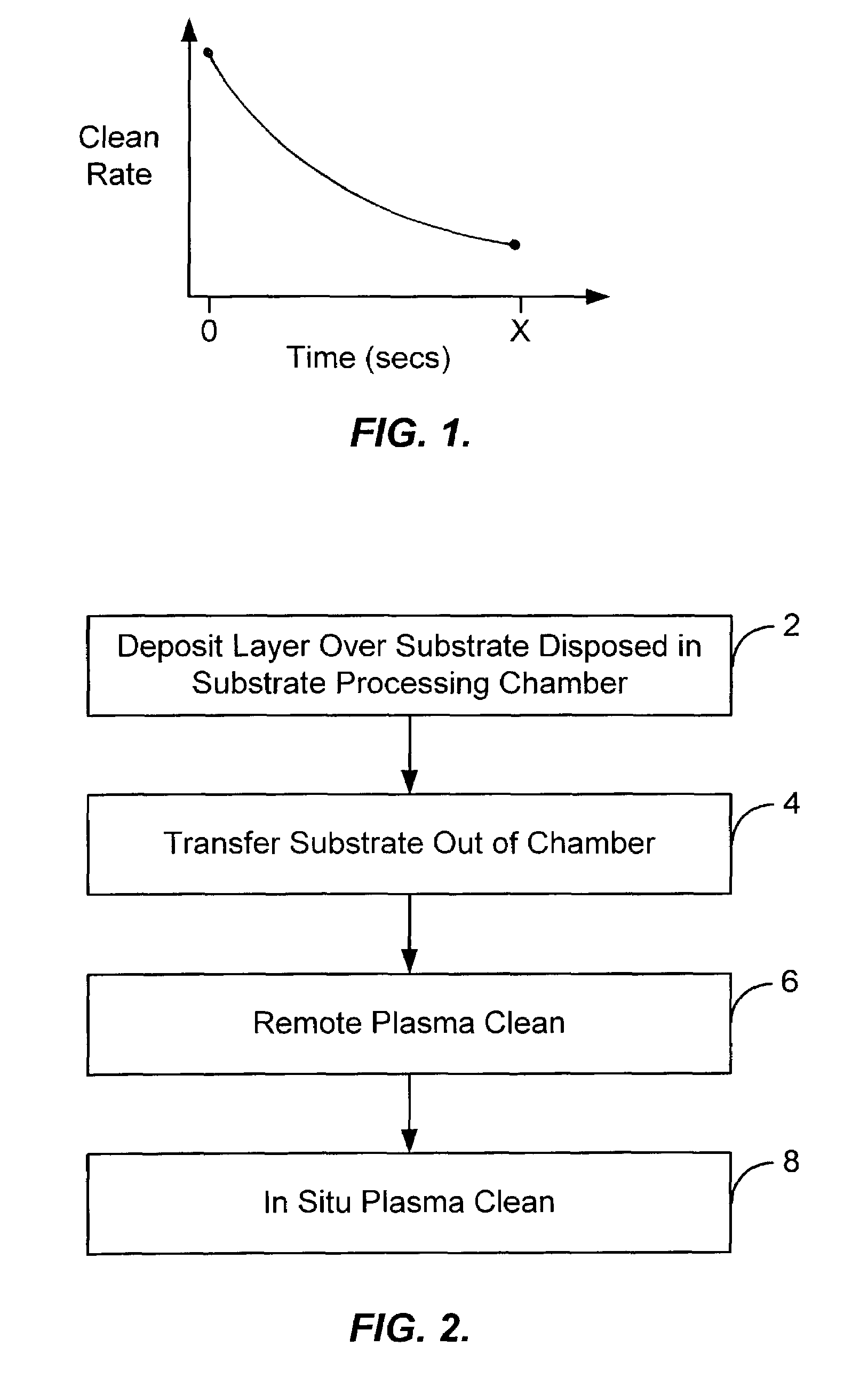Chamber clean method using remote and in situ plasma cleaning systems
a plasma cleaning and chamber cleaning technology, applied in the field of chamber cleaning methods using remote and in situ plasma cleaning systems, can solve the problem of requiring a higher volume of etchant gas than is required
- Summary
- Abstract
- Description
- Claims
- Application Information
AI Technical Summary
Benefits of technology
Problems solved by technology
Method used
Image
Examples
Embodiment Construction
[0015]Embodiments of the present invention provide for an improved remote plasma cleaning process by reducing the amount of etchant gas required to clean unwanted deposition build-up off interior surfaces of a substrate processing chamber as compared to other remote plasma cleaning processes. Generally, remote plasma clean processes allow a higher gas dissociation rate at high gas flow rates as compared to in situ plasma clean processes. This higher ionization efficiency allows large volumes of clean gas to be flowed into the remote plasma chamber and thus leads to higher clean rates and reduced clean times as compared to in situ plasma clean processes.
[0016]As shown in FIG. 1, however, the clean rate of a remote plasma clean process generally decreases over time as the process proceeds. At least part of the decrease in clean rate may be due to a decrease in the temperature of the chamber during the process. Typically, a remote clean process for a particular application is initiated...
PUM
| Property | Measurement | Unit |
|---|---|---|
| Temperature | aaaaa | aaaaa |
| Time | aaaaa | aaaaa |
| Flow rate | aaaaa | aaaaa |
Abstract
Description
Claims
Application Information
 Login to View More
Login to View More - R&D
- Intellectual Property
- Life Sciences
- Materials
- Tech Scout
- Unparalleled Data Quality
- Higher Quality Content
- 60% Fewer Hallucinations
Browse by: Latest US Patents, China's latest patents, Technical Efficacy Thesaurus, Application Domain, Technology Topic, Popular Technical Reports.
© 2025 PatSnap. All rights reserved.Legal|Privacy policy|Modern Slavery Act Transparency Statement|Sitemap|About US| Contact US: help@patsnap.com



